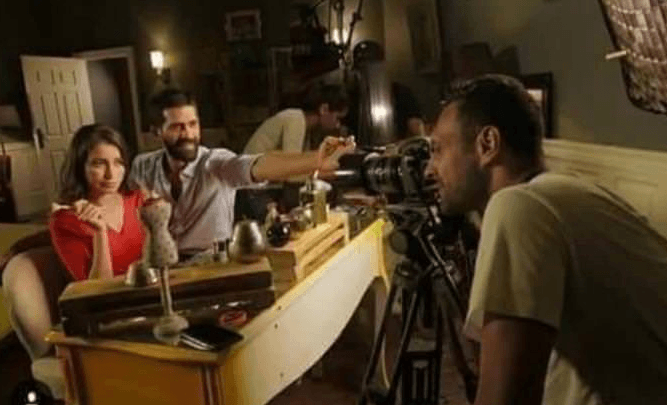Huawei recently embarrassed itself by faking the photos taken from the professional DSLR camera as a selfie taken by their own smartphone. This is not the first time the Chinese company has gotten into an awkward situation related to a Huawei fake photo. Earlier there have been controversies regarding the marketing and advertising campaigns of the company.
What Huawei has to say?
Huawei’s latest advertisement meant for Egypt, suggests a young couple taking a selfie at a party and then at home with the Huawei Nova 3. The video includes a rapid succession of moments, wherein the couple is getting ready to take a selfie and then the final photos are shown as the snapshots between all those moments.
However, as it turned out (pointed out by a Reddit user) the photos were actually taken from a DSLR camera that is used by professionals.
“A couple of days ago, Huawei Mobile Egypt posted a video advertising the front camera of its new phone Huawei Nova 3i … and today, the model (the lady) posted a photo on Instagram from behind the scenes showing that there’s actually no phone involved at all but it is in fact a professional picture taken with a DSLR,” the Reddit user said.

In its defense, Huawei told CNET that there is a disclaimer at the end of the video, suggesting the images and content “are for reference only.” “Product characteristics and actual specifications may vary (including but not limited to appearance, color, size), as well as actual presentation contents (including but not limited to backgrounds, user interface, and controls),” the Arabic text reads.
How fake photo was spotted?
One of the actors in the Huawei fake photo, Sarah Elshamy, posted behind the scenes pictures on her Instagram account. And, unfortunately for Huawei, one Reddit user discovered it. One of the shared images clearly shows a photographer shooting the at-home selfie with a DSLR camera. Although Elshamy was quick to pull down the photo from her Instagram account, it was already too late as the readers got their hands on the image and started sharing it.
Although Huawei’s ad video does not clearly state that the photos were taken by the smartphone, the chain of events and the whole story woven around the product have the intent to promote that very feature present in the smartphone.
The at-home selfie moment in the advertisement shows that the woman is not all that excited about the selfie until she is done with her makeup. However, the fellow actor decides to click anyway. The ad apparently claims that the phone’s powerful AI beauty feature modifies the image so well that the girl does not have to do her makeup.
Other Huawei fake photo incidents
This is not the first time the Chinese smartphone manufacturer has been surrounded by such a controversy. In an earlier Huawei fake photo incident, the Chinese company was caught photoshopping out the bezels on renderings of the P8. In another Huawei fake photo incident, an image, which was posted on its Google+ page, was morphed into believing that it was from the P9. But the EXIF data revealed that the photo was actually shot on a Canon EOS 5D Mark III.
After users caught the Huawei fake photo stunt, the Chinese company stated that it never meant to imply that the photo was taken from the P9, instead, it was only done to “inspire our community.”
Huawei is not the only smartphone brand whose desperation to claim superiority in the camera space has cost it its brand image. Just a few days back, Samsung Brazil also faked about a photo taken from the Galaxy A8 front facing camera when they were actually found on the stock image website of Getty Images.
However, unlike Huawei, Samsung admitted the mistake. “Oops, sorry, you’re right, Feliperas. Many of the photos we post are taken using our smartphones, but some, like this one, comes from a database of images that resonate with our target audience,” Samsung Brazil responded to the user who had revealed the fake Samsung images.
Huawei must have never done it
Initial reviews of the Huawei Nova 3 suggest that the phone looks like a bulkier version of the iPhone X. The USP of the Nova 3 is its AI-powered 24 and 16-megapixel lenses. Reviews suggest that despite the absence of a third rear camera (like on Huawei’s P20), the Nova 3 performs well.
When compared with the iPhone X, the picture taken from the Nova 3 showed more vivid shades of blue and green, while the picture by the iPhone X was closer to reality, according to abs-cbn. Similarly, comparing shots show that the pictures from the Nova 3 are brighter.
Nevertheless, the Nova 3 scores very well considering its price point. So, there was no need for Huawei to pull out such a trick, which has come back to haunt the company. The Shenzhen-based company only recently toppled Apple to become the second largest smartphone maker in the world after Samsung.
It’s hard to understand why some of the biggest names in the smartphone industry are resorting to phony settings. One reason could be that despite all the image processing algorithms and AI capabilities, there is a limit to what a camera in a phone can achieve.




